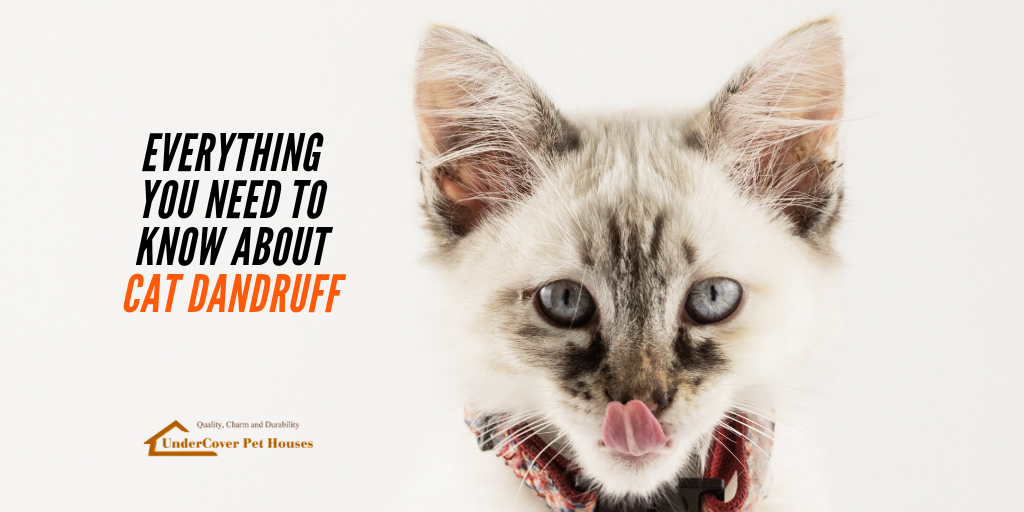 Loading... Please wait...
Loading... Please wait...Everything You Need to Know About Cat Dandruff
Posted by Danny MacDonald on 2019 Jul 1st

If you've ever struggled with dandruff, you know that it's no fun to look into the mirror and see tiny white flakes in your hair. However, you might not know that cats can have cat dandruff, too. If you look at your cat and say, "Help! My cat has dandruff!" you're not alone. Read on to learn about the causes and treatments for cat dandruff.
Here's everything you need to know about cat dandruff.
What is cat dandruff?
Cat dandruff is characterized by dry, dead skin cells that flake off onto your cat's fur. It can be caused by a number of different factors. Although veterinarians call it seborrheic dermatitis, most people just call it cat dandruff.
What causes cat dandruff to happen?
One of the most common skin issues in cats, cat dandruff can have several causes.
- Cats with obesity may have cat dandruff on their rear legs because they are unable to groom properly.
- Dry skin can lead to dandruff, especially if you live in a dry climate.
- Dandruff can also happen in cats with diabetes.
- Chemical irritants can cause dandruff in cats.
- Dandruff can be caused by a skin parasite, fungal infection, or an underlying medical problem.
Dr. Arnold Plotnick has noticed that many diabetic cats in his practice also have dry, flaky coats. If your cat displays weight loss, a ravenous appetite, excessive thirst and urination, in addition to dandruff, take her to the vet to be tested for diabetes. It's better to be safe than sorry!
Shopping for a feral cat house? Get free shipping at www.undercoverpethouses.com today!
Do I need to take my cat to the vet if she has cat dandruff?
If your cat has significant dandruff in addition to other signs of illness, you should make an appointment with the vet. But, if the dandruff is minor and she is generally healthy otherwise, you may be able to treat the dandruff at home. Use your judgment to decide what would be best.
If your cat has a mild case of dandruff, use a keratolytic shampoo to get rid of flakes. These shampoos are usually available at veterinary clinics. You can also comb her fur with a flea comb to remove stray flakes. To prevent more dandruff from occurring, give your cat an omega-3 fatty acid supplement. This will replenish the needed oils in her scalp and give her a luxurious, shiny coat.
What about "walking dandruff"?
Although it is extremely rare, cats may occasionally have a condition known as walking dandruff. It is caused by an infestation of the Cheyletiella mite. These mites live on the skin of cats, rabbits, dogs, or people. And they cause itching and dandruff to occur throughout the affected cat's coat. Other signs of walking dandruff are tiny scabs and symmetrical hair loss caused by over-grooming.
Why is it called walking dandruff? It's because the mites will walk around under pieces of dandruff on the animal's coat. Gross, I know! If you suspect that your cat may have walking dandruff, take her to the vet for testing. The vet will be able to provide topical treatments to get ride of the mites.
How can I prevent cat dandruff?
First, help your cat avoid obesity by feeding her a balanced diet and encouraging her to exercise. Also, brush your cat regularly to prevent dryness and flaking. During colder months, run a humidifier in your home to avoid over-drying. For bonus points, give her an omega-3 supplement daily.
Let's Chat:
Has your cat ever had a problem with cat dandruff? If so, how did you treat it? Let us know in the comments!
Ready to get an outdoor cat house? Shop our wide selection at UnderCover Pet Houses!
